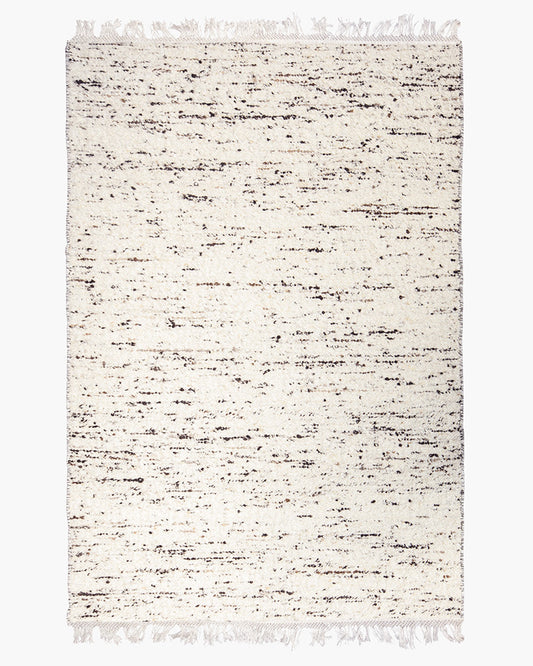
Mimbres Pottery 1100 CE southwestern New Mexico
Rugs, to some extent, are ahistorical. This isn’t because they lack tradition or cultural weight, but simply because textiles disappear quickly if exposed to the elements. Archaeologists aren’t obsessed with clay pots and carved stones out of preference; those objects are just the ones sturdy enough to survive a few thousand years underground.
Lucky for me, I now have a former archaeologist on payroll. Before pursuing a career in carpets and becoming our Studio Coordinator here at Mark Krebs, Kendall was an archaeologist in Arizona, digging up those pots and rocks. I asked her to write a little bit about her interest in carpets and the oldest rug ever found for this month’s newsletter. Enjoy!
- Davin Cowper
----------------------
What do you think about when you walk on your rug? Rugs, like so many other elements of a home, fade into the background. I expect the cushion underfoot as I get out of bed, stand in front of the sink, or settle down on the couch. Suddenly, I’ll be made aware again, of the vibrant colors, the softness of the wool, or of something that isn’t quite right, like a section of the pattern that isn’t quite symmetrical.
I fell in love with textiles after leaving my days as an archaeologist behind. Even then I was searching for the evidence of people in the past who created something imperfect that somehow survived millennia. Thumbprints pressed into pots, a misplaced paint stroke on a vessel, anything that was evidence of the human behind the artifact.

Action shot of an archeologist - Kendall in Arizona
The materials that make up a rug are more perishable than ceramics, which makes them more difficult for archaeologists to study. Textile fragments are more likely to be found in areas of extreme heat or cold, where the organic fibers have the best chance of being preserved. The oldest rug ever found, and of course one of the most famous examples of ancient rug-making, is known as the Pazyryk carpet. Preserved in the permafrost of Siberia, this knotted carpet, along with woven kilim fragments and felted fabrics, displays a deep knowledge of rug-making and fiber craft. While the origin of the Pazyryk carpet is debated, it is widely accepted that the piece dates to the 4th or 5th century BCE.[1] Generations of people had accumulated the knowledge of sheep herding, spinning, dyeing, and weaving for this piece to even exist. I can’t help but wonder about the textiles lost to time. What more could they have taught us?

the Pazyryk carpet - Oldest Carpet on record

While this practice has ancient roots, that does not mean that it is static. There have been countless innovations in the field of rug-making. We can choose to use machine-spun or hand-spun yarns, depending on the texture we want to create. Chrome or vegetable dyes will imbue more or less consistency of color. And the list goes on. New ideas, new designs, new methods.
Textile creation is a timeless craft. Throughout centuries and across continents, people have chosen to adorn themselves and their homes with decorative objects. Rugs serve a practical purpose of course, to insulate against the cold and dampen sound, but they are also beautiful. And who doesn’t want to be surrounded by beauty? There is something amazing to me about living with a piece of art that is evidence of a craft that is thousands of years in the making and yet is fits perfectly into my modern life.
Next time you walk across your rug, consider the many hands that went into making it. The centuries of accumulated knowledge and creativity. Maybe take a moment to sit down and look for those imperfections. To see the evidence that another person made this unique piece just for you.
- Kendall Baller
[1] A summary or the origins and early history of rug-making can be found in Oriental Carpets: A Complete Guide by Murray L. Eiland Jr. and Murray Eiland III (1998). Photos of the artifacts excavated alongside the Pazyryk carpet can be found in Frozen Tombs of Siberia by Sergei I. Rudenko (1953). The Pazyryk carpet is now housed in the Hermitage Museum in St. Petersburg (photo).





2 comments
Loved the Lunar letter ! Gotta remember to think outside the box. Know I am thinking about my carpets
Loved the Lunar letter ! Gotta remember to think outside the box. Know I am thinking about my carpets